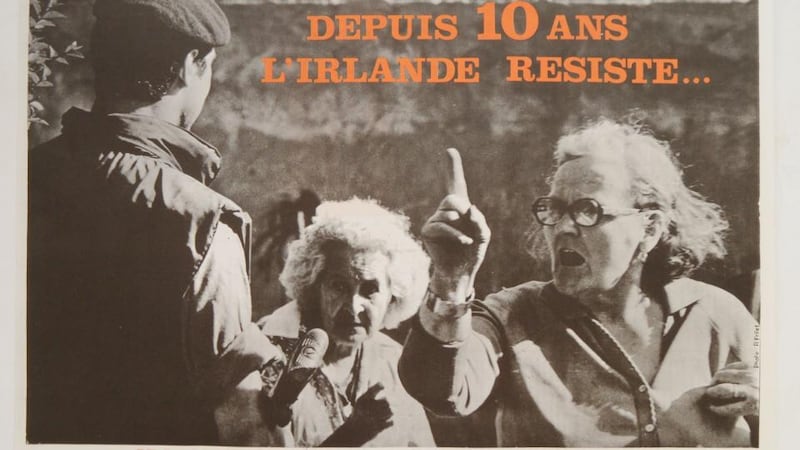The largest known private collection of memorabilia charting the bloody history of Northern Ireland is being offered free to a good home.
Despite spending most of his life building up the remarkable 38,000 item archive, retired London-based architect Peter Moloney wants to hand it over to a suitable institution that can preserve it.
The often unsettling record of the recent conflict - including political propaganda, pamphlets and posters - has already attracted interest from museums such as London’s Victoria and Albert.

But Mr Moloney (63) the son of Irish emigrants who painstakingly gathered the memorabilia from the age of 15, said he would like the collection to be on public view in Ireland.
“I would like to think it would be a motivator for peace and reconciliation and common understanding,” he said.
“Some of the pieces half of the community will hate and others the other half will hate, some will be shocked and some will even cry over them.
“But we have to face our past to make sure we don’t go there again.”
Among the ephemera are more than 3,000 political journals, 2,000 books, 15,500 images of banners and murals, 2,000 posters and 1,000 badges as well as cartoons and stickers.
Earliest pieces include an 1886 leaflet about a London gathering for Home Rule and postcards of the 1916 Easter Rising.
But most of the collection dates from the North’s civil rights movement in the 1960s up to the early years of the peace process.
There are artefacts from Bloody Sunday, the hunger strikes, peace initiatives, campaigns against plastic bullets, internment, extradition and the Prevention of Terrorism Act.
There is also an old Irish 10 penny piece stamped by the Ulster Defence Association as part of a loyalist sabotage campaign on the Republic's currency, Ulster Says No cigarette lighters and Orange Order Christmas decorations.
One item is an everyday Ulsterbus ticket with a confidential telephone number for informants on the back.
“There must have been hundreds of thousands of them produced and probably all thrown away, never even looked at,” said Mr Moloney, whose father is from Co Clare and mother is from Derry.
Born in Buncrana, Co Donegal, and raised in London, he lectured widely in the UK, Europe and the US on the conflict and started his collection originally as a means of illustrating his talks.
“Then I just became fascinated because some of the images were so powerful,” he said.
“I felt a lot of this material - some of which is quite frightening as well - I thought it wouldn’t survive.
“I thought it was important that I get my hands on as much of it as possible to try and safeguard it.”
Since 1969 he has made one or two visits to Ireland every year, starting in Dublin, then travelling to Derry and Belfast to gather the latest propaganda and mementoes.
The labour of love was not without its dangers.
The father-of-two was hauled in for questioning by special branch detectives at least 35 times - once overnight - as he returned with the latest additions to his archive, both republican and loyalist.
“They were a bit confused, wondering what side is this guy on,” he recalls.
“And a confused branch man is a rare animal to deal with.”
In the mid-1970s he had to flee the attentions of the Ulster Volunteer Force while buying loyalist badges on Belfast's Sandy Row.
The shopkeeper who recognised him from previous excursions weaved an alibi for him on the spot.
Mr Moloney believes the collection shows the good and bad done on both sides of the divide.
“I think it is an important slice of our recent social history,” he said.
“It is part of our shared identity whether we like some of it or not.”
In recent years it has become so large, and with some artefacts under threat of disintegrating, he has decided it needs a permanent home with professionals looking after it.
The Victoria and Albert in London is borrowing some of it for an exhibition called Disobedient Objects, while other items are on loan to a show touring Ireland by Healing Through Remembering.
Other museums - including the Guernica Peace Museum - have asked for some of the material, but he wishes it would remain together in Ireland.
“I would prefer it to be in the North of Ireland and preferably Derry, as Belfast already has the Linen Hall,” he said.
PA








